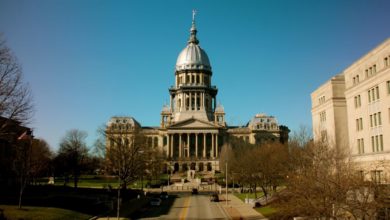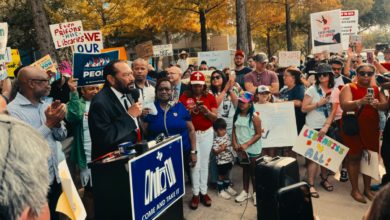“These gentlemen think that when they have changed the names of things they have changed the things themselves.” On Authority, Frederich Engels, 1872.
On March 30, the Schenectady School Board voted by a vote of 4-3 to hire six police officers into the Schenectady School District for the next three academic years. Schenectady is a small city in upstate New York, in the Capital District area.
The School District launched a pilot program at the beginning of this school year that placed two police officers at Schenectady High School, a majority Black and minority school. The new resolution will add four additional officers, one at each middle school, and one supervising officer.
The meeting took place at 7:00 p.m. in the Schenectady High School auditorium, with about a dozen police officers present and about 50 community members. The crowd, apart from the police, overwhelmingly opposed placing additional police in schools.
Opponents of the measure cited statistics on the disproportionate number of arrests of Black students in schools with police presence. According to a 2018 report by the Alliance for Educational Justice, Black and Latinx youth make up over 58 percent of school-based arrests while representing only 40 percent of public school enrollment nationwide. Black and Brown students are more likely to attend schools that employ police, but not school counselors. Black students were more than twice as likely to be referred to law enforcement or arrested at school as white students. Research shows a police officer bias, where police perceive of Black youth as less “childlike.” This bias accounts for the over-criminalization of Black students, not an actual difference in behavior.
Community members also advocated for spending funds on resources like social workers and counselors, instead of police. School Board member Jamaica Miles, who voted and argued against the resolution, explained that there is no data supporting the theory that more police in schools make schools safer. The data instead shows the harm that police cause students of color.
Superintendent Anibal Soler argued for the measure, stating that he wanted to change the narrative around the School District. He justified adding the new officers by changing their title from “School Resource Officers” to “Community Engagement Officers.” He stated that there is a “sense of intentionality” that will make this different from previous police placements at schools.
The Schenectady Police Chief, Eric Clifford, has stated that the idea for increased police presence in the schools arose in police reform meetings in response to the nationwide uprising against racist police brutality in 2020. When the public chanted “Defund the Police!”, Clifford and the Schenectady School District heard “More Police in Schools!” In reality, this is a tactical response to the uprising. The police seek to squelch the revolutionary potential of our youth.
No matter what we call the special bodies of armed men who have a monopoly on violence, their role is the same. The Community Engagement Officers’ handcuffs, assaults, and arrests will harm Black, Brown, and impoverished students just the same as those of officers on the street. The presence of these police officers in schools carries an implied threat of violence for students who know the brutality that these officers inflict on their communities. In July 2020, Schenectady police kneeled on the throat of Guyanese immigrant Yugeshwar Gaindarpersaud, while they were arresting him with his parents screaming on the sidelines. The data demonstrates the real effect of putting cops in schools: increased arrests, decreased safety. Classrooms should be a safe place for learning – cops in schools do just the opposite.





